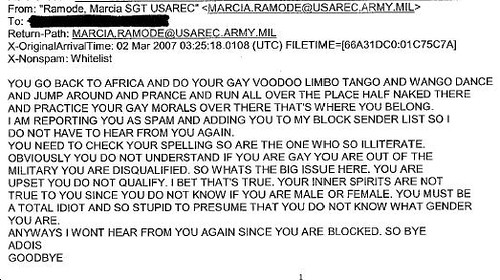I have to give a presentation on a scientific paper on Thursday, and the one I was assigned is
Lessons from the past: Evolutionary impacts of mass extinctions by David Jablonski (subscription probably required). It's essentially a review article of evolution at extinction events, and I thought some people might be interested in my write-up. It's more or less a condensed and dumbed down version of the article itself, formatted for a presentation. Enjoy.
What helps a species survive?Large extinction events don’t simply eliminate declining
clades, they also remove dominant lineages. Local abundance, species richness, and species-level geographic spread, which seem to be important during normal periods, don’t matter at extinction events. Large geographic distribution at the clade level seems to help, as does having a “resting state”, occupying unaffected areas, and having tolerances to the extinction stresses.
Why do some clades have different survivorship at different events?It could be that the extinction-prone elements die out, leaving more the clade more resilient, different extinction-forcing mechanisms at different events, or just plain old luck. But as of now, we really don’t know.
Are we in a mass extinction right now?Probably not. At the KT, 50% of bivalves, 97% of coral species, and 83% of coral genera died, far more than are dying now. And the genera that have died recently have generally been “species-poor” and “geographically restricted”, making today a period of accelerated extinction, not mass extinction. However, this does not mean that we should be complacent about modern extinction; it does mean that comparisons to the mass extinctions should “go beyond absolute intensities” and examine other factors, such as differential survivorship among regions and clades, and most importantly, the point of no return for the transition into a mass extinction event.
Continuity and CreativityEven the largest mass extinctions don’t completely restart evolution; enough
taxa are left to seed evolution. Certain trends are exhibited with these survivors.
Unbroken Continuity: Some evolutionary trends went unperturbed by the mass extinctions, such as: reefs made of rugose and tabulate corals and stromatoporoid sponges, the increase in mollusk shells as a response to predation, and the decline of Trilobites.
Continuity with Setbacks: Some trends are temporarily halted by extinctions, but then continue. These include: the expansion of angiosperms, the spread of bivalves to deeper burrowing depths, and the increase in complexity of
ammonoids. It’s unclear whether this is a result of selection against the traits that later prevail during times of normal extinction, or simply a result of the more evolved forms being sparsely populated and needing to be reinvented.
“Dead Clade Walking”: Some clades survive an extinction event only to die out or become marginalized as time goes on. Examples are: bellerophontid snails, prolecanitid ammonoids, the brachiopod order Spiriferoida, and
foraminiferal plankton. Preliminary and unpublished analysis suggests that more clades survive the extinction then die out than would be expected by chance.
Unbridled Diversification: Some clades radiate spectacularly after an extinction event. The most well-known example is the mammals after the KT event.
Predictability Mass extinctions do not result in evolution simply “reinventing the ecological wheel” by filling in preexisting “adaptive peaks”, evolution is “too opportunistic and too constrained by inherited body plans” for that to be true. There are convergences between species occupying similar niches in similar habitats, but there are complicating factors that prevent 1:1 convergence. The best example of this is the Cenozoic birds, such as the
phorusrhacid and diatrymid birds, which were the top predators of the early Cenozoic. These birds converged to theropod dinosaurs, and weren’t replaced by a mammalian analog when they became (naturally) extinct. The most obvious convergence for early birds was the
pterosaurs. While there are some birds occupying similar niches to pterosaurs, birds have not come to occupy all pterosaur habitats. Modern birds also depend on seeds to an extent not seen in pterosaurs, which is similar to the lack of any analog to baleen whales in the Mesozoic. After an extinction event, the course of evolution is impossible to predict in any but the broadest terms.
Time ScalesIf there is any evolution during extinction episodes, we don’t see it. There is no indication in the fossil record of major change even during protracted extinctions (such as the Permian). After the extinction is over, recovery times differ at every level. For example, marine reefs lag behind plankton systems. Exactly what causes this lag is unknown, but it could be sampling bias, differing difficulty of assembling new ecosystems, or differences between clades in evolutionary rates.
GeographyCertain regions seem to be more important than others in regenerating diversity after an extinction event, mainly “onshore marine settings” and tropics. However, little research has been done into why and how these places generate new taxa.
ConclusionsMass extinctions happen
Mass extinctions select differently than background extinction
Extinctions promote biotic exchange
The evolutionary response to extinction is slow, unpredictable, and “geographically heterogeneous”Labels: evolution, science


